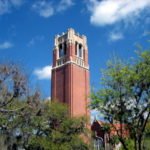Ivy League Schools in Connecticut: Does Connecticut Have Ivies?
What’s Covered:
- Are there Ivy League Schools in Connecticut?
- Key Facts About Yale University
- Top 10 Non-Ivy League Schools in Connecticut
- What Are Your Chances of Acceptance?
There is just one Ivy League school in Connecticut; however, the state is home to a number of remarkable colleges and universities, including fantastic liberal arts colleges, well-regarded public universities, and top-ranked Catholic institutions of higher education.
Are there Ivy League Schools in Connecticut?
There is one Ivy League college in Connecticut: Yale University. While the Ivy League has come to define eight prestigious and selective schools in the Northeast and Mid-Atlantic known for their rigorous academics, the Ivy League has its roots in athletics.
The term Ivy League was first coined by sportswriter Stanley Woodward in 1933 when he expressed his lack of enthusiasm for covering football teams from the “ivy-covered halls of learning.” Woodward was an alumnus of Fordham, then home to one of the country’s best football programs.
The name stuck, and in 1954, the Ivy League was officially founded as a Division 1 athletic conference. Here, the eight prestigious schools—Brown, Columbia, Cornell, Dartmouth, Harvard, Pennsylvania, Princeton, and Yale—were first officially brought together.
Key Facts About Yale University
What to know about Yale University? Founded in 1701, Yale is the third-oldest college in the U.S. Consequently, it claims a number of firsts, including the first college newspaper, the first student a cappella group, and the first student-led center for public service and social justice.
Yale Admissions
Location: New Haven, CT
Undergrad Enrollment: 6,814
Acceptance Rate: 4%
Middle 50% SAT: 1480-1560
Middle 50% ACT: 33-35
Yale’s inclusion in the Ivy League and consistently high rankings—CollegeVine ranks Yale as the third-best college in the nation—make admission to the school extremely competitive. The school places a considerable focus on academics and values students who passionately engage with an academic topic outside of the classroom.
While Yale places a significant amount of weight on academics, it’s also seen as the school amongst HYPSM institutions (Harvard, Yale, Princeton, Stanford, MIT) most responsive to students with artistic achievements. Notable Yale attendees include the actress Meryl Streep, actor Paul Newman, and Kehinde Wiley—who gained national recognition for painting the official portrait of President Barack Obama for the National Portrait Gallery.
Yale Location
Yale’s historic campus is located just 90 minutes from both New York City and Boston, opening up a host of internship, research, and professional opportunities in a wide range of fields. New Haven itself is best described as “large enough to be interesting, yet small enough to be friendly.” Visiting New Yorkers might be shocked to discover the variety of foods found in New Haven’s restaurants, including pizza that rivals the Big Apple’s own.
Yale’s campus is known for its Gothic architecture, most notably its Memorial Tower and Quadrangle. It’s also home to buildings with a more modern design, like the Beinecke Rare Book & Manuscript Library, which features Vermont marble and granite construction along with a glass tower of books. It also contains coveted books like an original Gutenberg Bible and a first-edition copy of Paradise Lost.
Yale Academics
All undergraduates attend Yale College, whether they’re studying the liberal arts, the sciences, or engineering. The college offers over 80 majors and more than 2,000 unique courses. Most majors require a student to complete a senior requirement—an essay, research project, or portfolio on which a student works one-on-one with a professor for one or two semesters.
Students at Yale who don’t find a program that meets their academic interests have the option to create their own majors. Yale’s special divisional major allows students to build their own major under the guidance of faculty advisors and with the approval of the Director of Undergraduate Studies.
Studying abroad is popular with Yale students. A large percentage of the student body will study, research, or participate in an internship abroad during their time at the university—the majority through Yale Summer Sessions, intensive, highly structured study abroad programs led by Yale instructors.
Yale Financial Aid
Yale practices need-blind admissions—meaning they don’t consider an applicant’s ability to pay for college when making admissions decisions—and will meet 100% of the demonstrated need of students regardless of their citizenship or immigration status. Yale will meet the demonstrated need of students without the use of loans.
Students from families with a total gross income below $75,000 are not expected to make any financial contribution to their education.
Top 10 Non-Ivy League Schools in Connecticut
|
School |
Location |
Acceptance Rate |
Undergraduate Enrollment |
|
Middletown, CT |
16% |
3,805 |
|
|
New London, CT |
24% |
1,081 |
|
|
Hartford, CT |
29% |
2,204 |
|
|
New London, CT |
37% |
1,990 |
|
|
Storrs, CT |
52% |
20,056 |
|
|
Fairfield, CT |
33% |
5,391 |
|
|
Fairfield, CT |
68% |
6,960 |
|
|
Hamden, CT |
77% |
6,248 |
|
|
West Hartford, CT |
96% |
4,229 |
|
|
West Hartford, CT |
79% |
993 |
1. Wesleyan University
Location: Middletown, CT
Acceptance Rate: 16%
Undergraduate Enrollment: 3,805
Wesleyan might not be an Ivy League college, but it’s part of a group of schools unofficially known as the “Little Ivies.” Like their Ivy League counterparts, the Little Ivies are known for their rigorous academics and selective admissions—they’re among the most prestigious liberal arts colleges in the country. Also, like they’re Ivy League counterparts, they’re brought together by an athletic conference, the NESAC.
Wesleyan is known for its open curriculum, which allows students to follow their own educational path under the guidance of an advisor. The university has no core requirements, although it has established General Education Expectations that encourage students to sample a wide breadth of fields.
2. United States Coast Guard Academy | Coast Guard
Location: New London, CT
Acceptance Rate: 24%
Undergraduate Enrollment: 1,081
The smallest of the U.S. service academies, the United States Coast Guard Academy offers nine majors in engineering, technology, science, management, and government—65% of students graduate in a STEM major. Students (called cadets) benefit from a low 7:1 student-to-faculty ratio and small class sizes—the average class size is just 16 cadets.
The Coast Guard Academy is a military college, so students shouldn’t expect a traditional college experience. Cadets must follow a military chain of command, pass a physical fitness exam, and meet grooming standards. Graduates of the academy are required to serve for five years, however, 85% stay longer.
3. Trinity College
Location: Hartford, CT
Acceptance Rate: 29%
Undergraduate Enrollment: 2,204
Founded in 1823, Trinity College is the second-oldest institution of higher education in Connecticut (Yale, the state’s Ivy, is the only institution older). Trinity is home to a tight-knit student body, with roughly 85% of its undergraduates living on campus.
When students do leave campus at Trinity, it’s typically for J-Term (short for January term)—a two-week-long program providing students with the chance to enroll in a .5 credit course, on-campus, online, or abroad.
Architectural Digest ranked Trinity the 8th-prettiest college campus in the country. The school’s chapel was designed by the architect who designed the National Cathedral in Washington, D.C., and its “long walk” features several early examples of Collegiate Gothic architecture.
4. Connecticut College
Location: New London, CT
Acceptance Rate: 37%
Undergraduate Enrollment: 1,990
One way that Connecticut College stands apart from other schools is its Connections Program. Connections, which encourages students to explore multiple disciplines and it integrates with everything they do during their college experiences—like study abroad, internships, and research—to prepare them for life after college. The program culminates in the fall of senior year with an all-college symposium.
The honor code is one of Connecticut College’s defining traits. It was created in 1922 and was based on an ancient Athenian oath of citizenship. The honor code sets the standards for academic and social order, but more importantly, it sets the tone for campus and is the foundation of the shared bond and way of life of the school’s students.
5. University of Connecticut | UConn
Location: Storrs, CT
Acceptance Rate: 52%
Undergraduate Enrollment: 20,056
UConn is the largest college in Connecticut. It’s home to 14 schools and colleges through which it offers 125+ majors. More than 700 clubs and organizations are found on UConn’s campus, including over 40 Greek chapters.
UConn is known nationwide for its basketball program. Its men’s team has won six national championships and NBA all-timers like Ray Allen, Kemba Walker, and Richard Hamilton are counted among its alumni.
The success of its women’s team is even more impressive—it won a record 12 national championships, went on a 111-game win streak (that lasted from November 23, 2014, to March 31, 2017), and was home to some of the best women’s basketball players ever, including Diana Taurasi, Sue Bird, and Maya Moore.
6. Fairfield University
Location: Fairfield, CT
Acceptance Rate: 33%
Undergraduate Enrollment: 5,391
Fairfield University is one of 27 Jesuit (a Catholic religious order) colleges in the U.S. and the only Jesuit college in Connecticut. Fairfield embraces the Jesuit tradition of “magis,” which means “more” and is often used to describe the journey to do more and become better, both for the individual and the community.
This is best demonstrated at Fairfield through its Magis Core Curriculum, which is designed to help students develop their own values and understanding of the world as well as gain knowledge of the “why” and “how” of human behavior. The two-tiered learning experience (orientation and exploration) requires students to complete 15 courses in everything from literature to mathematics and demands that students take at least one interdisciplinary and one social justice course.
7. Sacred Heart University | SHU
Location: Fairfield, CT
Acceptance Rate: 68%
Undergraduate Enrollment: 6,960
Sacred Heart is another Catholic college that calls Fairfield home. In fact, Sacred Heart is the second-largest Catholic university in New England. It was the first Catholic college in the U.S. to be staffed by the laity, or ordinary members of the church who are neither clergy nor recipients of Holy Orders.
Service plays a large role in life at SHU. Students perform 118,000+ hours of service globally and the university has partnerships with more than 100+ nonprofits and agencies in the Bridgeport area. It also has more than 20 tutoring and mentoring programs that connect SHU volunteers to students in local area schools.
Looking for love? Of the 61,634 living Sacred Heart University alumni, there are 1,194 married alumni couples.
8. Quinnipiac University
Location: Hamden, CT
Acceptance Rate: 77%
Undergraduate Enrollment: 6,248
Quinnipiac is known for delivering students a hands-on education—73% of students participate in at least one internship during their time at the school and 25% take part in a faculty research project. Nearly one-third (31%) of Quinnipiac students study abroad—the university offers programs in 32 countries ranging from Barbados to Australia.
In the classroom, Quinnipiac students benefit from small classes (the average class size is just 20) and a low student-to-faculty ratio (11:1). Academically, Quinnipiac has built a reputation for its dual-degree programs, of which they offer 21, allowing students to graduate sooner and begin their careers earlier.
9. University of Hartford
Location: West Hartford, CT
Acceptance Rate:96%
Undergraduate Enrollment: 4,229
The University of Hartford’s location attracts students from across the globe. Its tree-lined campus is located just miles from Connecticut’s capital building and within a few hours of major cities like New York, Boston, and Providence. Students from 53 countries and 42 states are represented on its campus.
The university offers over 100 undergraduate majors through its seven schools. Outside of the classroom, the school is home to more than 100 student organizations and clubs. It also fields 18 intercollegiate athletic teams—eight men’s and ten women’s.
10. University of Saint Joseph
Location: West Hartford, CT
Acceptance Rate: 79%
Undergraduate Enrollment: 993
The University of Saint Joseph was founded in 1932 by the Sisters of Mercy, an international community of Roman Catholic women. Today, the school continues in the Catholic tradition; however, it became coeducational in 2018. The university offers 25+ undergraduate programs and boasts a low student-to-faculty ratio of 9:1. The average class size is just 14 students.
Experiential learning is an important part of a University of Saint Joseph’s education; 86% of undergraduate students participate in an internship, clinical placement, or other experiential learning opportunity.
What Are Your Chances of Acceptance?
The top colleges in Connecticut are extremely selective, but your chances of getting into one will depend on the strength of your profile. CollegeVine’s free chancing engine can help you better understand your odds of admission. It uses your personal metrics like grades, test scores, and extracurricular activities to estimate your chances of acceptance at the Nutmeg State’s best schools along with 1,600+ colleges and universities nationwide.



